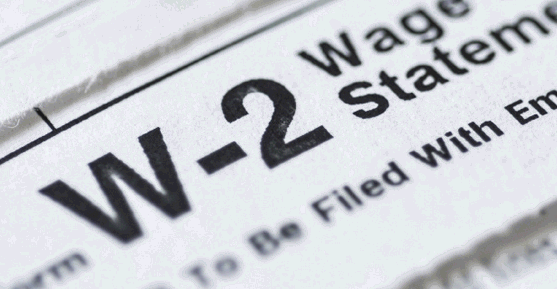What You Can Learn From Your W-2 Tax Form
Apr 11, 2018 • Written by Paul Staib | Certified Financial Planner (CFP®), MBA, RICP®
Blog Home » Financial Planning » What You Can Learn From Your W-2 Tax Form

Only employees will receive a W-2. As you review your W-2, here are some of the key line items to focus on.
W-2 Box 1: Wages, Tips, Other Compensation
Start with the big picture: Compare your current year’s wages with wages from previous years. If you see an increasing trend, that’s all for the good. But if your wages have been flat or declining, maybe it’s time to ask for a raise or potentially look for a job where your skills would be appreciated through greater monetary reward. Remember that phantom income has the potential to inflate the number you see in this box – if you’ve received restricted stock units from your employer that have vested, for example, the amount that vested in the tax year will show up in Box 1, even if you haven’t sold the stock and pocketed the money.
You may also notice that the amount in Box 1 is lower than what you know to be your gross income. That’s because Box 1 shows your gross income less any of your pre-tax deductions, such as health insurance premiums, your contributions to health savings account or flexible spending arrangement, or contributions to a traditional 401(k) or other defined contribution plan. Note if you’re making Roth 401(k) contributions, however, they will not reduce the amount that’s in Box 1.
W-2 Box 12
Here, you’ll find your contributions to your employer’s retirement plan for the preceding tax year. Take note of the dollar amount – the maximum contribution for 2023 was $22,500 (for those under age 50) or $30,000 (over age 50). For 2024 the contributions are increased to $23,000 (for those under age 50) or $30,500 (over age 50).
Alongside Box 12b you’ll see a letter denoting your contribution type. The notation “D,” “E,” or “G” indicates that you’ve made pretax (traditional) contributions to a 401(k), 403(b), or 457 plan, respectively, whereas the letters “AA,” “BB,” and “EE” denote Roth contributions. Whether you expect your tax rate to be higher or lower in retirement is the main determinant of whether to go with Roth or traditional contributions. If you’re not sure, most plans that allow Roth contributions will allow you to split your contributions between the two account types.
W-2 Box 14: Other
This box depicts a grab-bag of additional information that the employer wishes to impart to the employee; it allows for information that doesn’t have its own box on the W-2, such as union dues and educational assistance payments. Employees receiving restricted stock units may see a notation about them here.
Related posts:

Paul Staib | Certified Financial Planner (CFP®), MBA, RICP®
Paul Staib, Certified Financial Planner (CFP®), RICP®, is an independent Flat Fee-Only financial planner. Staib Financial Planning, LLC provides comprehensive financial planning, retirement planning, and investment management services to help clients in all financial situations achieve their personal financial goals. Staib Financial Planning, LLC serves clients as a fiduciary and never earns a commission of any kind. Our offices are located in the south Denver metro area, enabling us to conveniently serve clients in Highlands Ranch, Littleton, Lone Tree, Aurora, Parker, Denver Tech Center, Centennial, Castle Pines and surrounding communities. We also offer our services virtually.
Read Next
5 Stealth Taxes That Can Impact Your Retirement
• Written By Paul Staib | Certified Financial Planner (CFP®), MBA, RICP®
Every year, an increasing number of retirees are impacted by one or more “stealth” taxes. While certain taxes may be…
Staib Financial Planning, LLC Receives 2022 Best of Lone Tree Award
• Written By Paul Staib | Certified Financial Planner (CFP®), MBA, RICP®
Press Release FOR IMMEDIATE RELEASE Staib Financial Planning, LLC Receives 2022 Best of Lone Tree Award Lone Tree Award Program…
